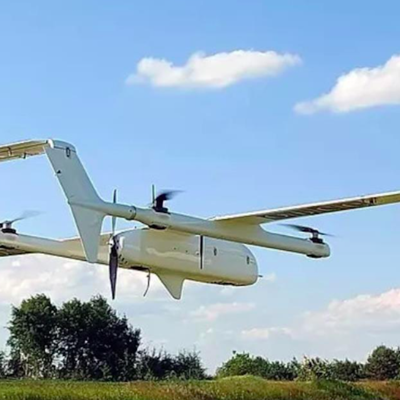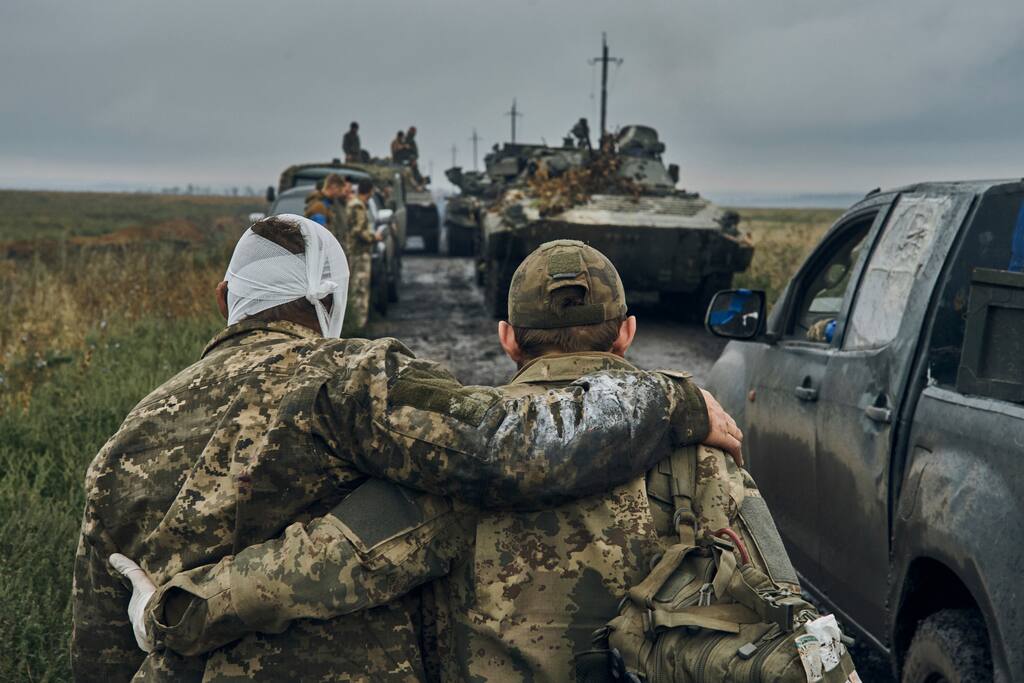Viiksekäs Perunahirvi löytänyt verukkeen jolla tyydyttää Putin: "Otamme osaa Erikoisoperaatioon puolustamalla venäjää puolaa, latviaa ja liettuaa vastaan" 

Follow along with the video below to see how to install our site as a web app on your home screen.
Note: This feature may not be available in some browsers.

Pohjois-Koreahan on edelleen sitä mieltä, että edustavat koko niemimaataPohjois-Korea hyväksyy Venäjän aluevalloitukset

Nuo mahdollisesti kerätyt joukot tuolla tekee kolmea asiaa:
a) rantalomailevat, voivat hyvinkin olla lepovuorossa olevaa joukkoa rintamalta
b) sitovat pelkällä paikallaan ololla ryssää
c) odottavat tilaisuutta jos ryssä alkaa kaapia etulinjasta joukkoja reserviksi muualle
Muiden rintamien huomioista tärkein on se että etulijan jälkeen ei näytä olevan yhtään ryssää reservissä. Kaikki on kiinni aktiivisessa etulinjassa. Ukrainalla sensiaan näyttää olevan varsinkin kevyen jalkaväen varustetta vaikka muille jakaa, satunnaisissa kuvissa jo takavarmistajillakin alkaa olla joka toisella pimeänäkövehkeitä myöten kaikki. Näin tuolla voi olla koulutusjoukkoa, näitä lomavuorolaisia tai sitten viimeisen päälle koulutettua kärkeä odottelemassa oikeaa hetkeä.
Ukrainan joukkojen varustus ja koulutustahti tuntuu olevan nyt sellainen yksi hyökkäyskykyinen armeija/kk. Ensimmäinen valmistui ja aloitti loppusotansa Itä-Ukrainassa, seuraava Khersonissa niin omien laskujen mukaan kolmannen pitäisi olla kohta höökikunnossa. Jos siis mennään samalla tahdilla. Tämän perustan siihen että Ukrainalla ei ole puutetta innokkaista ja hyväkuntoisista tekijöistä eikä jalkaväen varusteista. Raskas on sitten se kysymysmerkki. Kaipa siellä alkaa tulla Puola-Tzekki akselilta huollettua sotasaalista. Puolasta kadonneet tankithan ilmeisesti löytyi Khersonista.
Minkälaista se infrapunasavu sitten on? Menee puoli-insinöörismiehellä nyt ymmärryksen yli.Lämpötila itsessään ei ratkaise. Esimerkiksi taivaalla leijuvien pilvien läpi ei lämppäri näe vaikka näiden kylmien pilvien sisällä olisi lämmin kohde.
Tässä Rheinmetallin tuotteita:Minkälaista se infrapunasavu sitten on? Menee puoli-insinöörismiehellä nyt ymmärryksen yli.
OK, eli Perunahirviön massa-armeija siirtyy Nato rajalle tuolta Ukrainan rajalta?Viiksekäs Perunahirvi löytänyt verukkeen jolla tyydyttää Putin: "Otamme osaa Erikoisoperaatioon puolustamalla venäjää puolaa, latviaa ja liettuaa vastaan"
A family of drones designed to operate against extremist groups is proving effective against the Russian military, and their manufacturer is quickly working to upgrade them with information from the Ukrainian troops putting them to use. But even company officials caution that drones won’t serve as a substitute for the larger weapons Ukraine needs.
Cyprus drone-maker Swarmly has already sent about 50 drones to Ukraine, a company official told Defense One. The smaller is the Poseidon H10 with a 3.5-meter wingspan, two-hour endurance, and 8-pound payload. The larger is the Poseidon H6, a gasoline/electric propulsion hybrid with a five-meter wingspan, 7-hour endurance, and 50-pound payload.
All 50 were purchased with private donations.

Tästä taisi olla juttua taannoin. Olikohan 650kg sekalaista räjähtävää kokonaisuudessa mitä ukrainalaiset keräsivät talteen tuosta.Venäläiset yrittäneet Harkovan suunnalla räjäyttää patoa. Vaan sehän meni onneksi odotetusti.
A mass brawl has broken out between new recruits and established soldiers at a Russian army base near Moscow, media reports said on Monday.
The Kremlin’s call for more troops for the war on Ukraine have led many potential conscripts to try to flee Russia, while now tensions appear to have boiled over inside the armed forces themselves.
“The newcomers were not welcomed there with bread and salt. On the contrary, the soldiers serving there demanded the newcomers’ clothes and cell phones,” the Internet portal Baza reported.

The Pentagon’s international affairs chief said Monday that Russia’s new losses in the strategic southern Kherson region are about to spiral into a “major defeat” that would give Ukraine a defensive position amid “hot fighting” expected this winter.
After news that Ukrainian forces broke through Moscow’s defenses in Kherson, which Moscow saw as the gateway to Odessa, Assistant Defense Secretary for International Security Affairs Celeste Wallander said the Ukrainians were on the verge of pushing back the main Russian bridgehead across the Dnipro River.
“That would be a major defeat for Russia because it pushes back even more Russia’s ambition to take Odessa, which was one of the stated objectives earlier this year,” Wallander said at a Center for Strategic and International Studies event.
“It gives Ukraine another defensive position to ride out what probably will be hot fighting over the winter,” Wallander said, adding that in spite of Ukraine’s recent strategic successes, the U.S. and international community must continue to supply Ukraine with aid.

A new mission is being established at U.S. European Command’s headquarters in Germany to oversee how the U.S. trains and equips Ukrainian troops, according to a report by the New York Times.
The plan for a formal structure in Wiesbaden, Germany, for the U.S. efforts to aid Ukraine following the Russian invasion in February was presented by EUCOM commander Gen. Christopher Cavoli to Defense Secretary Lloyd Austin in late September, according to the Times.
Citing an unnamed source within the U.S. military and Biden administration, the Times reported that the new command would include approximately 300 personnel, and would likely report to Cavoli. While the command’s headquarters would be situated in Wiesbaden, training would likely take place at other U.S. bases in Germany, such as Grafenwoehr or Hohenfels, where the Army has large ranges.
A final decision on the command is expected within the next few weeks.
“In close coordination with our Allies and partners, we continue to take steps to align our support to the Ukrainian Armed Forces in a more unified manner in order to aid the Ukrainians with their most urgent needs on the battlefield against the Russian invading force,” EUCOM spokesman Lt. Cmdr. Daniel Day told Military Times in a statement. “At this time, any additional changes or moves to improve our ability to support the Ukrainians are pre-decisional, but as previously stated, we continue to take steps to better align our support.”
Signs of a potential re-structuring have been seen in recent weeks, as a multi-national logistics cell — the International Donor Coordination Center — moved from Stuttgart to Wiesbaden earlier this summer.
“The co-location with the U.S. Army Europe and Africa headquarters, as well as XVIII Airborne Corps increases the ability of the organization to rapidly support Ukraine operations,” EUCOM said in a statement regarding the Aug. 6 move.

Imagery has emerged on social media recently that shows one or more Russian trains carrying a number of rare 4x4 BPM-97 Vystrel light armored vehicles fitted with turrets armed with 30mm cannons. The movement of the BPM-97s has garnered unique interest as they may be associated with the Russian military's 12th Main Directorate, which oversees the country's nuclear arsenal. These observations come amid growing threats from Russian President Vladimir Putin and other officials in Russia about the potential use of nuclear weapons as Ukrainian forces continue regaining territory. As such, they seem to have led to some startling headlines that seem unsubstantiated. The fact is that while such a deployment could very well point to a more ominous nuclear operation in the works, there are many other reasons, some of them glaring, for such a movement, in addition to just normal training operations.
A video and a picture of what may be the same train carrying the BPM-97s, as well as other trucks, first appeared online yesterday, but it's not immediately clear where or when it was taken. Geolocation of the video by open-source intelligence enthusiasts appears to show that it was taken in Sergiyev Posad, a Russian city northeast of Moscow, and that the train itself was moving in a southwesterly direction. Though we cannot say with absolute certainty that the still picture is of the same train as is seen in the video, it seems very possible as the same types of vehicles are visible in both.

Russian lines in the Kherson region, which has been a scene of fierce fighting as of late, are being compromised by rapidly advancing Ukrainian units, including those sporting heavy armor.
The counteroffensive has reportedly liberated a number of towns that make up parts of the four areas Russian President Vladimir Putin has been in the process of illegally annexing through sham referendums held over the past couple of weeks. The lower house of Russia's parliament, or Duma, has now written the results of these heavily manipulated elections into annexation treaties, which will be reviewed by the upper house tomorrow, claiming that the Kherson, Zaporizhzhia, Donetsk, and Luhansk territories now belong to Russia. However, it is now widely reported that Russian lines near Kherson and Luhansk especially are facing heavy pressure.

Kun suorittaa pieniä laskutoimituksia, ei tuo kovin suuri ihme ole. Oletetaan, että venäläisillä on Ukrainassa noin 200 tuhatta ukkoa. Noista voidaan arvioida BTGn rakenteen perusteella olevan jalkaväkeä noin neljännes, eli 50 tuhatta. Rintamaa on noin 1000 kilometriä. Tekee 50 jalkaväkimiestä kilometrille. Ei noilla kovin tiivistä linjaa useampaan portaasen tehdä vaikka miten yrittäisi.Tällä Tuiterolla sama havainto/johtopäätös, mihin olen tullut itsekin viimeisen kuukauden aikana: venäläisillä ei tunnu olevan rintaman takana syvyyttä laisinkaan, eikä taistelulinjan takana kunnollista tuettua selustaa, jossa olisi taistelukelpoisia varustettuja miehiä reservissä heitettäväksi läpimurtoon?
1/1. The further UKR advances, the fewer Russian units it encounters and the less combat capability it encounters. It is what progress has in the rear. Link to Rybar Tweet 1.
Kun rintama pettää, se pettää heti syvälle saakka ja sitten saamme lukea, miten Venäjä yrittää siirtää ressuja tukemaan jo romahtanutt rintamaa. Kummallista.

